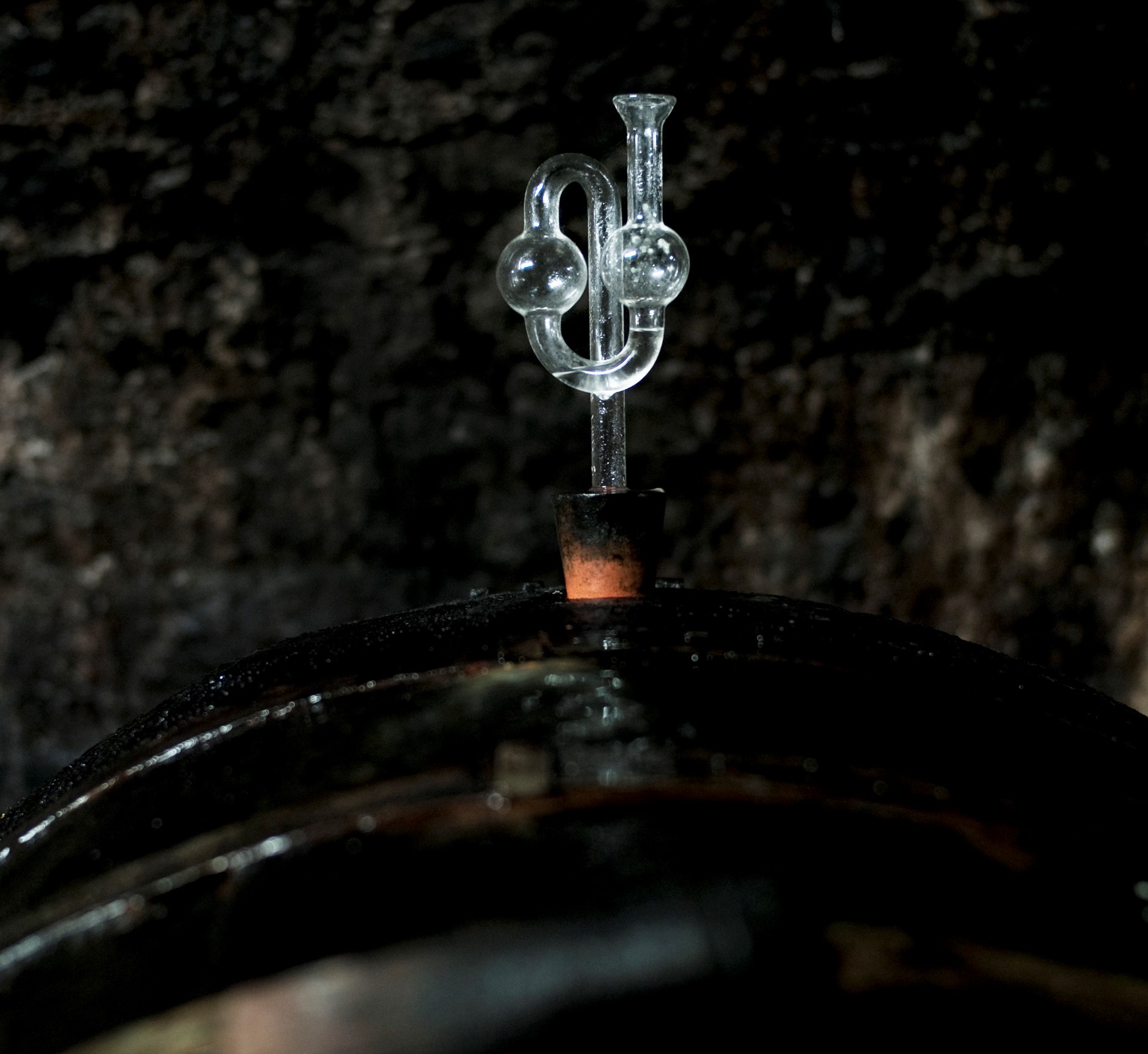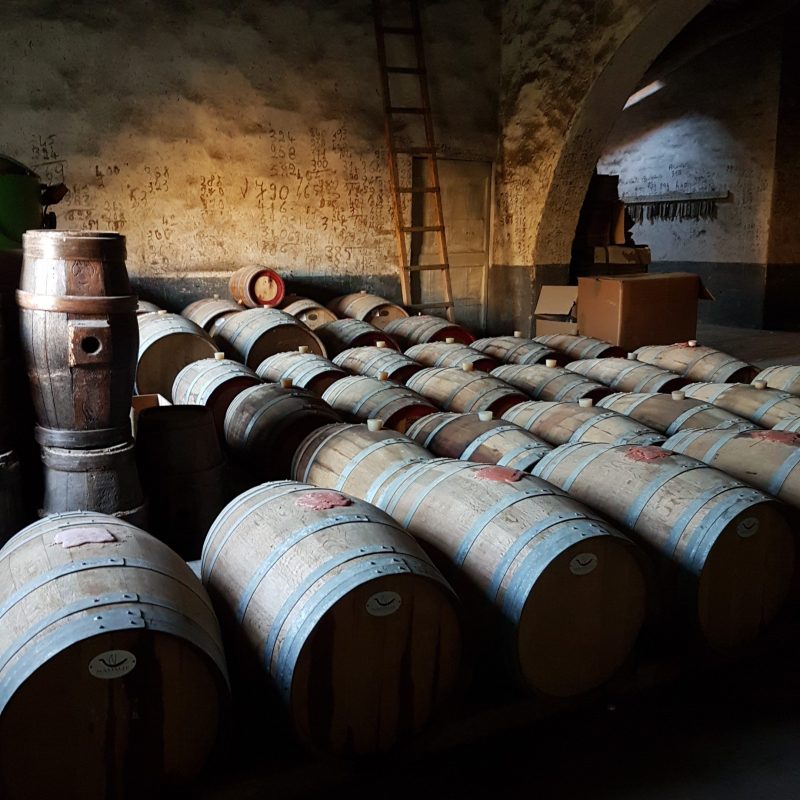
23 Jul What you need to know about wine and wood aging
By: Robert Handjes Image header: Kiki Kouthoofd Wood has played a major role in making and storing wine for a very long time. Since the early Middle Ages, wood has been the most commonly used material in making and maturing wine: for wine presses, fermentation vats and to store and transport wine. Until the advent of the bottle – in the 17th century – wine was usually served and drunk straight from the barrel. The bottle also made winemakers more aware of the role of wood: on the one hand, wine often kept better in well-sealed bottles, on the other hand, it was seen that maturing in barrels had an influence on the quality of the wine and its shelf life in the bottle.
The role of Wood
Nowadays, wood can play a role in both the fermentation and the maturation of wine. In most cases, oak is used. For example, American oak (Quercus Alba), with a relatively coarse fibre, but less extract than European oak, which gives a clear “oak tone” to the wine. More expensive, but often rated higher, is European oak (Quercus Sessilis), mainly from France, with a very fine fibre and somewhat more wood tannins. The origin also plays a role. Due to the much higher precipitation in, for example, the Vosges, the oak there has much wider annual rings and a somewhat coarser fibre than wood from oak trees in Central France. Famous for its very fine structure, the wood comes from the Tronçais forest. Before wood can be used to make barrels, it must be dried. Traditionally, this drying is done in the open air, for three years. During this drying in the open air, the wood is also naturally rinsed by the rain, which slowly reduces the amount of tannins and causes all kinds of transformations in the wood. Nowadays, the wood is often also dried artificially, in special ventilated rooms. Although this wood obtains the same mechanical, i.e. physical properties as with natural drying, no further transformations occur in the wood.
The Barrel
The most common form of a barrel is one in which the staves are slightly bent: in the middle the diameter of the barrel is larger than at the front and back. In order to make such a barrel, the cooper will first have to bend the wooden staves. To do this, he will heat the wood on the inside over an open fire. The heat makes the wood more elastic and it shrinks more on the inside than on the outside. The extent to which the wood is heated and sometimes even charred on the inside has a clear influence on the taste of the wine that matures in it later. In fact, a number of chemical transformations take place in the wood during heating. Most winemakers specify very precisely to what extent the wood should be charred when they order new barrels. In short: heavily charred barrels give the wine a more intense, more aromatic character, with tones of tobacco and a certain smokiness, which sometimes comes at the expense of finesse; lighter charred barrels, on the other hand, result more quickly in more elegant, finer wines, in which the fruit is also better preserved. The size of the barrel also plays an important role: in short, the larger the barrel, the smaller the available surface area of wood per litre of wine. In a 200 L barrel, there is 50% more wood surface area available per litre of wine than in a 500 L barrel. A commonly used barrel size is the barrique, with a capacity of 225 litres. New wood has a different effect on wine than wood that has already been used for maturing wine for several years. The effect of new wood is greatest, particularly with regard to the interaction between substances in the wood and in the wine, and the release of components by the wood to the wine. Depending on the wine, a winemaker chooses only new wood, a mix of new and used wood or only used wood. In general, it can be said that after six to nine years, the wood has become virtually inert with regard to the wine.

Wijnvaten waar bij Principe Corsini Chianti ligt te rijpen. Beeld: Albert van Beeck Calkoen
The fermentation on wood
The vast majority of white wine is fermented in tanks made of stainless steel, among other things. But sometimes winemakers choose to ferment white wine in barriques: during fermentation in wood, a large number of interactions take place between wood and wine. For example, the wood tannins ensure that the wine clears easily and naturally; and the color becomes much more stable, a great advantage for the wine that needs to mature further in the bottle. A well-known technique to give a white wine extra complexity is to let the young wine mature on the fine lees (dead yeast cells) for some time, whereby this lees is stirred regularly for a few months. The fine lees not only gives the wine more aromas but also structure and a certain roundness. This stirring (bâtonnage de lie) is best done in a wooden barrique. And thanks to the natural clarification, a wine fermented in wood hardly needs to be clarified and filtered. It is important to realize that the wood tone that a white wine fermented in wood obtains is a side effect and never a goal in itself. In a young wine, the wood tone can still be clearly recognizable, over time, in a well-made wine, the wood tone will increasingly merge with the other aromas that together determine the taste of the wine. Red wine is rarely or never fermented in barriques or similar barrels. Red wine ferments together with the skins and it is difficult to get them in and out of a barrique. However, some winemakers, and especially at some of the best wineries, still use wooden fermentation vats. Due to the low heat exchange of wood with the environment, the freshly fermented wine cools down only very slowly, which results in a much better extraction of the colour and aroma substances from the skins.
The maturation on wood
Winemakers often choose to ferment in a tank and then only let a young white wine mature in oak. Fermentation in a tank is much more efficient, especially in large-scale production. But these wines usually seem to have less structure and complexity and the wood tone seems less integrated in the wine. Often, a choice is made to mature part of the wine in wood and another part in a tank. By then blending both wines, one can achieve the desired wood tone and also obtain a certain degree of complexity. In the maturation of young red wine, wood plays a decisive role, if one wants to make a wine that needs to mature in the bottle for a long time. Such a wine must be complex, stable in colour, not form too much sediment and have a correct balance between tannins and fruit. In all these aspects, maturation in wood plays an important role. The interaction between wood and colour not only gives the wine a deeper, but also much more stable colour and the largest tannin molecules precipitate, which ensures good clarity in the long term. Also, the hard, rough tannins disappear from the young wine to make way for softer, more supple tannins, partly originating from the wood. And then there is the natural clarification of the wine that matures in oak. After a sufficiently long maturation (i.e. one to two years) the wine becomes completely (or almost completely) naturally clear and stable. Filtering is then not or hardly necessary; filtering never adds anything to a wine and a winemaker who strives for quality will want to limit clarification and filtering to the utmost. But at the same time, clarity and stability of the wine are an absolute condition for successful maturation in the bottle. Maturation in wood ensures that both, at first sight contradictory conditions, can be met. Many, if not most, great red wines are aged partly in wooden barrels. For this reason, the smell and taste of wood is often confused with quality: these aromas seem to become an end in themselves by adding wood chips, or even wood aromas to fermenting must or young wine. The side effect of a special way of making wine is thus elevated to the main goal, often applied to fairly simple wines. One may wonder where the boundary lies in this case between natural wine and aromatized wine, such as vermouth, retsina or cinchona. Paul Pontarlier, the winemaker at the famous Château-Margaux during his lifetime, expressed it aptly as follows: “Wood is only dominant in a mediocre wine. The wood must disappear, merge, be forgotten. Wood is the pepper and salt that enriches the sauce without spoiling the taste. “Whoever truly succeeds in achieving a good marriage between wine and wood will have to strive tirelessly to ensure that this marriage remains as harmonious as possible.”



No Comments